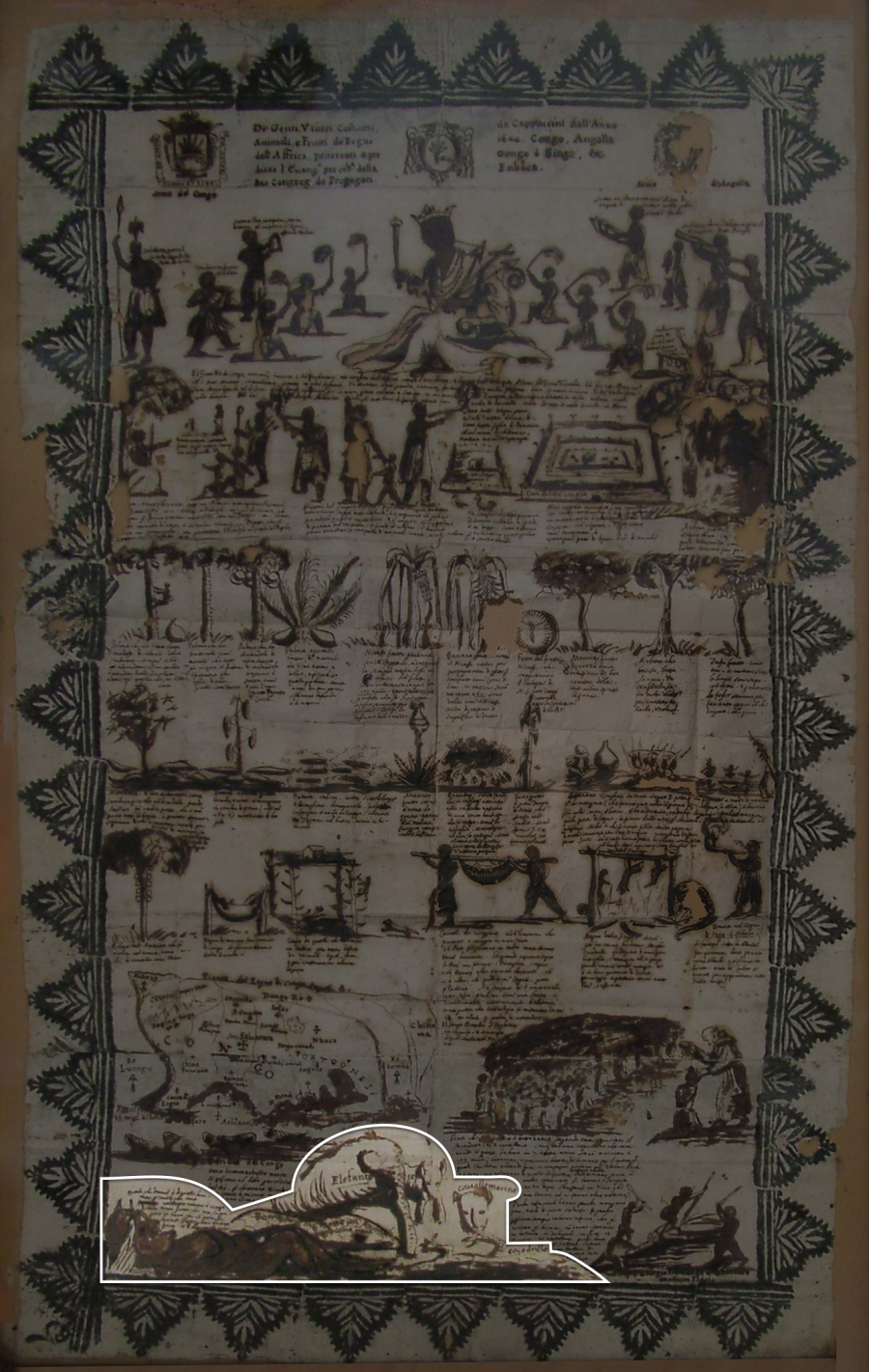Corner cartouche bestiary
Questo che dormí è di quelle huomini piccioli che sono [. . .] nel Regno vicino à Congo di testa tanto grossa che mai la pongono in terra per nõ poterla levare. L’appoggiano ad una forca. Vi é monocolo anco.
This one who sleeps is one of these small men1 who are [. . .] in the Kingdom near the Congo of such large head that they never put it on the ground for not being able to lift it. They rest it on a fork.2 There are also cyclops.
Bomba3 [. . .] un Animale grosso come trave [?]
Bomba [. . .] big as a beam
Elefante4
Elephant
Sepra5
Zebra
Cavallo marino6
Hippopotamus
Cocodrillo7
Crocodile
- 1This is an early European representation of a man from one of the more than twenty distinct populations known for their short stature and hunter-gatherer lifestyle. See Paul Verdu and Giovanni Destro-Bisol, “African Pygmies, what’s behind a name?” Human Biology 84, no. 1 (2012). Serge Bahuchet, “L’invention des Pygmées (Inventing Pygmies),” Cahiers d'études africaines 33 (1993).
- 2Likely a headrest, a type of object found across the African continent. See Anitra Nettleton, African dream machines: style, identity and meaning of African headrests (Johannesburg: Wits University Press, 2007).
- 3Perhaps the mbumba snake, otherwise known for its spiritual significance in central Africa see Thornton, “I am a subject of the king of Kongo,” 192-93; Mobley, “The Kongolese Atlantic,” chapter 5.
- 4Loxodonta africana.
- 5Equus quagga or Equus zebra.
- 6Hippopotamus amphibius.
- 7Order Crocodilia.


Add new comment